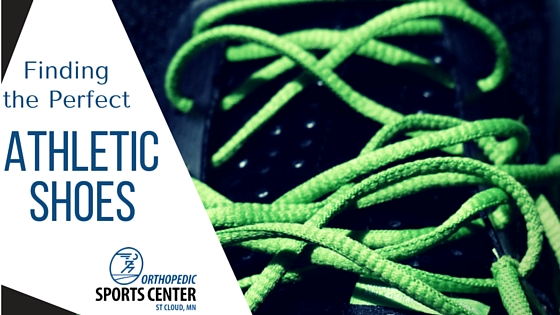The fit of a running shoe can make a world of difference when it comes to your health and comfort. With hundreds of options on the market, how do you know where to begin? Look to our seven tips below to get started on finding the perfect athletic shoes for your needs.
- Walking shoes, running shoes and cross-trainers – what’s the difference?
Walking shoes are stiffer and provide more rigid support. Running shoes are built to last longer, are more flexible and offer extra cushioning to handle greater impact. They also often cater to a wider range of foot types. Cross-trainers work best for exercises and activities that involve side to side movements, such as aerobics, weight training, and kickboxing.
- Know your sole: Three main foot types
- Flat feet: Flat feet often have fallen arches, making them flexible and prone to overpronation (an inward rolling motion of the foot). When shoes become worn out, they will often show wear-and-tear on the top inner edge. Wearing a high-stability or motion-control shoe can help prevent overpronation.
- Neutral feet: Neutral feet fall in between flat feet and high-arched feet. Worn shoes show sign of even wear. A moderate stability shoe works well for runners with neutral feet, but these runners can often run in many different kinds of footwear.
- High-arched feet: The opposite of flat feet, high-arched feet are often rigid and end up leading to supination (or landing on the outside edges of feet). Worn shoes will often show wear on the top outer edge. Runners with high arches will need a cushioned shoe for shock absorption. Padding midsole will help increase flexibility.
- What problems can the correct shoes prevent?
Runner’s knee, plantar fasciitis, early-onset arthritis, shin splints, and aching heels are just some of the problems associated with exercising in old and ill-fitting shoes. The right shoes can go a long way in preventing these issues.
- How should a shoe fit?
For maximum fit and comfort, many runners wear a half-size up from their street shoes. This allows for one-fourth to one-half inch of wiggle room. This little bit of extra room will provide room for toe movement while securing your heel and avoiding slippage.
Pro tip: Try on shoes at the end of the day. Feet swell over the course of a day and they expand when you walk, run, and workout. Shoes should fit when they are at their largest. For maximum fit, bring the same kind of socks that you would wear while wearing these shoes, and likewise, if you wear orthotics, bring those as well.
- Other factors to consider
In addition to determining if you have flat, neutral, or high-arched feet, consider how many miles you plan on running. A shoe might feel great in the store, but the real test comes a few miles into your run. Many shoes on the market also offer fancier features like clear inserts, gel-filled insoles, freon, air pockets, and so forth – be wary. Some features are purely aesthetic while others provide an intended support. It’s always a good idea to do some research in order to purchase the perfect pair of shoes.
- Know when to replace your shoes
Even the perfect pair of shoe will eventually be unable to provide maximum comfort and support once they become worn out. Running shoes should be replaced between every 350-400 miles of use. Shoes should also be replaced when the sole is worn out or the shoes feel uncomfortable or less supportive.
St. Cloud Orthopedics offers GaitScan technology to help determine the perfect fit for insoles. This creates a faster and simpler method for making insoles that does away with creating casts and creates an accurate and immediate fit.

